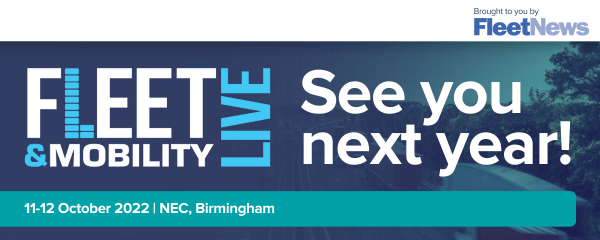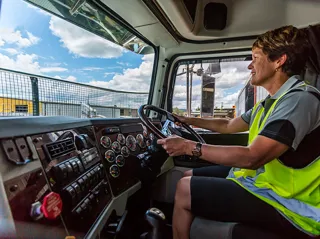Changes to the HGV test to help tackle the driver shortage have been criticised by insurance firm QBE.
Drivers will only need to take one test to drive both a rigid and articulated lorry, rather than having to take two separate tests (spaced three weeks apart). This, according to the Government, will make around 20,000 more HGV driving tests available every year and mean drivers can gain their licence and enter the industry more quickly.
Tests will also be made shorter by removing the ‘reversing exercise’ element – and for vehicles with trailers, the ‘uncoupling and recoupling’ exercise – and having it tested separately by a third party. This part of the test is carried out off the road on a manoeuvring area and takes a significant amount of time.
Testing such manoeuvres separately will free up examiner time, meaning they can carry out another full test every day.
Car drivers, meanwhile, will no longer need to take another test to tow a trailer or caravan, allowing roughly 30,000 more HGV driving tests to be conducted every year.
There is currently a shortage of more than 100,000 drivers in the UK, out of a pre-pandemic total of about 600,000.
Jon Dye, director of underwriting for motor at QBE, said: “The Government plans to change how drivers obtain an HGV licence comes with increased risk.
“The combining of Class C and Class E tests is likely to mean that prospective drivers have less time to develop their hazard perception skills and research has shown that drivers are more likely to be involved in crashes involving speed and manoeuvring due to poorer hazard perception and familiarity with the vehicle.”
Dye says that to anticipate this risk, fleet operators should do all that they can to ensure that the right person undertakes licence acquisition training.
“Businesses need to recruit safe drivers, but it is often difficult to predict whether new drivers will demonstrate safe attitudes and behaviour on the job,” he added.
QBE endorses systems such as DriverMetric’s Selection Driver Risk Index, which is a psychometric assessment that provides a robust and validated approach for the recruitment and selection of safe and responsible drivers.
Ensuring drivers are buddied up for a period of time, use of telematics data to monitor and manage performance and improve general driving standards, and providing ongoing coaching and support are all key to success, said Dye.
“The supply chain crisis in the UK clearly requires action but any changes to alleviate the pressure must fully consider the adequate learning and development of drivers to ensure safety on our roads and minimise the probability of serious accidents,” he continued.
“Additional risk comes from drivers with a lack of experience and driving hours before being granted a licence.”
Figures from the DVSA (Driver and Vehicle Standards Agency) show that the national pass rate for B+E driving tests was 69.6% in 2019/20 and only 58% for 2020/21.
In other words, between 30-42% of people taking this test are unable to demonstrate the minimum standard of driving and competence to tow loaded trailers on the road on at least their first attempt.
Driver shortage crisis under the spotlight at Fleet & Mobility Live
Logistics UK and Driver Require will explore ways in which the UK can address the current HGV driver shortage crisis as part of an in-depth session at this year's Fleet & Mobility Live.
Chris Yarsley, Logistics UK’s policy manager for Wales, Midlands and South West, will give a presentation looking at some of the ways the Government is being engaged on policy to help remove some of the barriers to progress.
Yarsley said: “We’re working with the Government across multiple departments, including the Department for Transport (DfT), Department for Education (DfE) and Department for Work and Pensions (DWP) to look at how policy can address the driver shortage.
“This includes boosting apprenticeships and access to funding there, as well as introducing short term visas to attract European drivers to help address the shortage.
“There are even things to do with infrastructure and facilities for lorry drivers that can make the profession less appealing, so there are many areas where policy can make a difference.”
Kieran Smith, chief executive at specialist HGV driver recruitment business Driver Require, will then reveal the latest results from the company’s Think Tank report.
Driver Require has been tracking the UK’s HGV driver shortage issue for a number of years prior to the Coronavirus outbreak and then more closely to investigate the way forward due to the impact of Covid-19 on the UK haulage sector.
The previous report in May had predicted that the unprecedented events of the last 12 months would lead to a driver shortage crisis in the coming months.
Smith said: “As a supplier to the haulage sector, Driver Require had already experienced a significant increase in demand and a scarcity of quality drivers – and agency driver pay rates are escalating at a frightening pace.
“As a temporary recruiter, we are at the coalface of the crisis but it will be our clients and ultimately businesses and consumers who rely on the movement of goods across the UK who will pay the greatest price.
“We need to raise the profile of this issue, dispel common perceptions and provide industry key influencers and decision makers the opportunity to act to secure the UK’s economic recovery.”
The full agenda for Fleet & Mobility Live is now available to view and registrations are open and free to fleet decision makers.
























Login to comment
Comments
No comments have been made yet.